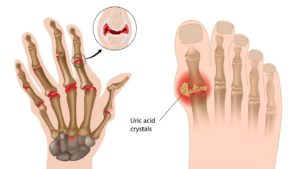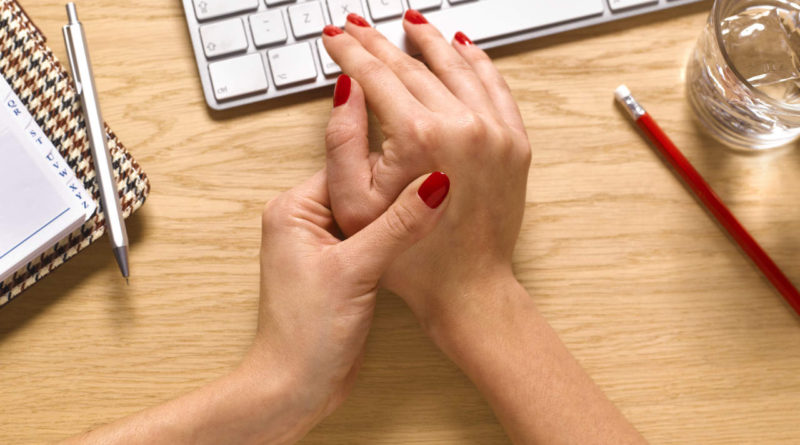Take Control of Arthritis
Researchers are developing newer and better treatments for arthritis, a chronic pain condition. You can discuss with your doctor which one will be the most suitable treatment for you
By Abhigyan & Abhinav
 If you are experiencing symptoms like aching joints, difficulty in dressing or combing hair, gripping objects, sitting or bending over, joint being warm to the touch, morning stiffness for less than an hour, pain when walking, and stiffness after resting, swelling of joint and loss of motion in a joint, you must consult an orthopaedician. You might have arthritis because these are its common symptoms.
If you are experiencing symptoms like aching joints, difficulty in dressing or combing hair, gripping objects, sitting or bending over, joint being warm to the touch, morning stiffness for less than an hour, pain when walking, and stiffness after resting, swelling of joint and loss of motion in a joint, you must consult an orthopaedician. You might have arthritis because these are its common symptoms.
In common parlance, arthritis is a condition that affects more than 10 percent of the adult population. There are more than 100 different types of arthritis. The false notion that all forms of arthritis are alike has led people to try treatments that have little effect on their arthritis symptoms. Since each type of arthritis is different, each type calls for a different approach to treatment. That means an accurate diagnosis is crucial for anyone who has arthritis.
Types of Arthritis
There are two major types of arthritis — osteoarthritis, which is the “wear and tear” arthritis, and rheumatoid arthritis, an inflammatory type of arthritis that happens when the body’s immune system does not work properly. Gout, which is caused by crystals that collect in the joints, is another common type of arthritis. Psoriatic arthritis, lupus, and septic arthritis are other types.
Osteoarthritis is also called degenerative joint disease or degenerative arthritis. It is the most common chronic joint condition. Osteoarthritis results from overuse of joints but most commonly it is an aging phenomenon. It can be the consequence of demanding sports where joints may be injured or obesity, which places increased load on weight bearing joints. Osteoarthritis in the hands is frequently inherited and often happens in middle-aged women. Osteoarthritis is most common in joints that bear weight — such as the knees, hips, feet, and spine. It often comes on gradually over months or even years. Except for the pain in the affected joint, you usually do not feel sick, and there is no unusual fatigue or tiredness as there is with some other types of arthritis.
With osteoarthritis, the cartilage gradually breaks down. Cartilage is a slippery material that covers the ends of bones and serves as the body’s shock absorber. As more damage occurs, the cartilage starts to wear away, or it doesn’t work as well as it once did to cushion the joint. As an example, the extra stress on knees from being overweight can cause damage to knee cartilage. That, in turn, causes the cartilage to wear out faster than normal.
As the cartilage becomes worn, cushioning effect of the joint is lost. The result is pain when the joint is moved. Along with the pain, sometimes you may hear a grating sound when the roughened cartilage on the surface of the bones rubs together. Painful spurs or bumps may appear on the end of the bones, especially on the fingers and feet. While not a major symptom of osteoarthritis, inflammation may occur in the joint lining as a response to the breakdown of cartilage.
Rheumatoid arthritis
It is the most common type of inflammatory arthritis. About 75% of those affected are women. In fact, between 1% and 3% of women are likely to develop rheumatoid arthritis in their lifetime. Rheumatoid arthritis is an autoimmune disease. That means that the immune system attacks parts of the body. The joints are the main areas affected by this malfunction in the immune system. Over time, chronic inflammation can lead to severe joint damage and deformities. About one out of every five people who have rheumatoid arthritis develop lumps on their skin called rheumatoid nodules. These often develop over joint areas that receive pressure, such as over knuckles, elbows, or heels.
Symptoms of rheumatoid arthritis can come on gradually or start suddenly. Unlike osteoarthritis, symptoms of rheumatoid arthritis are often more severe, causing pain, fatigue, loss of appetite, stiffness.
With rheumatoid arthritis, you may feel pain and stiffness and experience swelling in your hands, wrists, elbows, shoulders, knees, ankles, feet, jaw, and neck. Sometimes the pain occurs in one body part. But more commonly, rheumatoid arthritis pain occurs in combinations of several joints such as in the hands, knees, and feet.
With rheumatoid arthritis, the joints tend to be involved in a symmetrical pattern. That is, if the knuckles on the left hand are inflamed, the knuckles on the right hand will also be inflamed. After a period of time, more of your joints may gradually become involved with pain and swelling and may feel warm to the touch. The joint swelling is persistent and interferes with activities. For example, it can interfere with opening a jar, driving, working, and walking — the very activities that allow us to function in our daily lives.
The symptoms and effects of RA may come and go. A period of high disease activity (increases in inflammation and other symptoms) is called a flare. A flare can last for days or months. Ongoing high levels of inflammation can cause problems throughout the body. Here RA can affect organs and body systems leading to dryness, pain, redness, sensitivity to light and impaired vision in eye, dryness and gum irritation or infection in mouth, small lumps under the skin over bony areas. Inflammation and scarring can result in shortness of breath in lungs and inflammation of blood vessels that can lead to damage in the nerves, skin and other organs.
Treatment of Arthritis
Arthritis is a chronic pain condition. Pain relief is the goal of treatment and disease management strategies. Currently, there is no cure for arthritis. The treatment is aimed at controlling symptoms and slowing progression of the disease. In other words, medication and other arthritis treatments may have analgesic (pain-relieving) effects, anti-inflammatory effects, and disease-modifyingeffects. The goal is to feel better, maintain a good quality of life, and slow down joint destruction. People with certain types of arthritis, such as rheumatoid arthritis may achieve remission with treatment. But, remission is not a cure. Arthritis is a chronic disease. It doesn’t go away with treatment. Researchers are continually developing new and better treatments for arthritis. Take an interest in learning more about what is in the pipeline. You can discuss potential new treatments with your doctor, as you decide together whether a new treatment will be an appropriate option for you or if it would be better to stay the course with your current treatment.
Over-the-counter (OTC) medications for pain relief, like acetaminophen and nonsteroidal anti-inflammatory drugs (NSAIDs) such as ibuprofen or naproxen sodium, provide relief from arthritis pain. The OTC acetaminophen can reduce mild and moderate arthritis pain that often accompanies osteoarthritis.
In addition to medications, there are supplements and creams that you can purchase over the counter that may also alleviate arthritis pain.
Among the most popular supplements used by people with osteoarthritis are glucosamine and chondroitin. In those with moderate to severe knee pain from osteoarthritis, the combination of glucosamine and chondroitin sulfate may be effective in providing pain relief, although medical studies have not shown clear proof that they are helpful in everyone.
In addition to over-the-counter NSAID medications, pain physicians can suggest prescription NSAIDs to treat arthritis pain and inflammation. Prescription NSAIDs may also be available in topical and injectable forms. Besides ibuprofen and naproxen, other examples of prescription NSAIDs include diclofenac and others.
Potent anti-inflammatory agents like Synvisc One can be injected to reduce pain and inflammation. Ozone Gas injections have also clinically proven to be extremely effective at pain relief.
The stem cell/Platelet Rich Plasma (PRP) therapy involves injecting platelets from the patient’s own blood to rebuild a damaged tendon or cartilage. It has been successful in not only relieving the pain, but also in jumpstarting the healing process. The patient’s blood is drawn and placed in a centrifuge for 15 minutes to separate out the platelets. The platelet-rich plasma is then injected into the damaged portion of the tendon or cartilage.
The surgery procedures are used as a last resort. Like all other surgeries, these surgeries have their own issues like associated risks and high hospitalization and recovery times. However, the success rate for surgeries is limited to 60-70 percent.

